The Controversial Canine
- Breeding = winter, spring
- Habitat = grassland, oak hammock, wetland, flatwood, scrub
- Status = conflict species; invasive?
- Scientific name: Canis latrans
Common names: Coyote, American jackal, prairie wolf and brush wolf
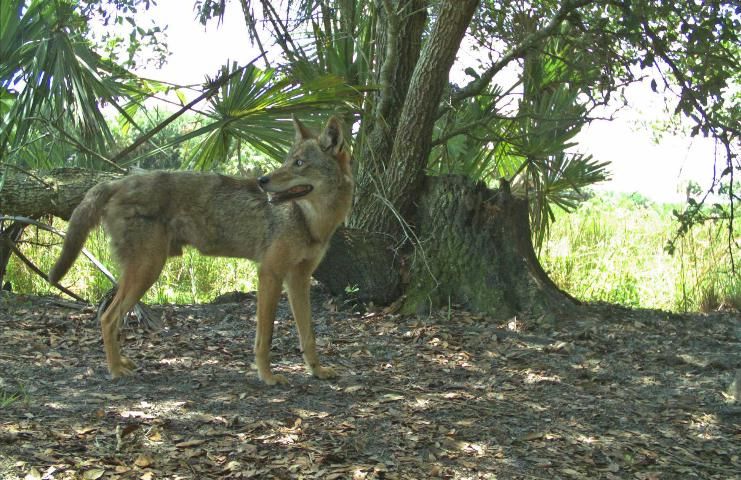
Credit: UF/IFAS
Habitat: All habitats, including urban areas.
Physical description: Body length of 3–4 feet. Dog or wolf-like; a mixture of browns, grays, whites, and even black. Large, triangle-shaped ears, long slender muzzle, and bushy tail.
Weight: 20–35 lbs
Reproductive rate: 2 month gestation; female in heat annually; average 6 pups/litter
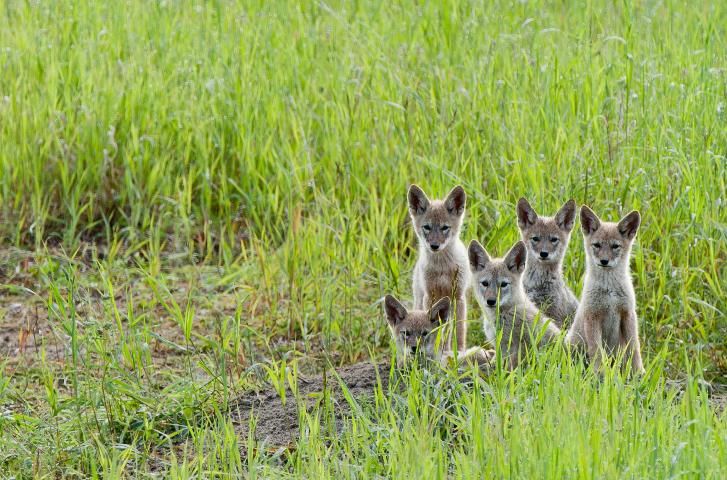
Credit: Larry Citra
Lifespan: Coyotes live 5–6 years in the wild. The oldest reported coyote in captivity lived 18–19 years, and the oldest in the wild lived about 12 years.
Dispersal & home range: Pups may disperse from pack when they are 8–10 months old depending on their rank within the pack and the availability of food resources. Some remain with the pack or disperse after the first year. Average home range size is 10-14 mi2, with core home range areas of 1-2 mi2.
History: The earliest sign of coyotes in Florida is from fossilized skull fragments dating from the late Pliocene. Near the end of the last glacial period, fossil records of a large wolf and coyote species disappeared from eastern North America. This also coincides with the period when humans started to inhabit North America and the first fossil records of the red wolf (Canis rufus) appear. Before the 1700s, coyotes occupied the deserts and prairies of central North America and Mexico. Coyotes expanded from the Great Plains in the 1940s. Their expansion is attributed to two major factors, namely, the eradication of wolves, which reduced competition pressure, and human alteration of the landscape for agricultural use, which opened up coyotes' preferred rangeland habitat. In Florida, reports of coyotes being released or escaping date back to the 1930s, however coyotes did not expand into Florida until around the 1960s. Today, coyotes are present in every county in Florida.

Credit: UF/IFAS
Distribution: Coyotes are now present in most of North America from northern Canada and Alaska to their lower limit around Panama. Within the last decade, many researchers and ranchers suggest that their populations have continued to increase. Two recent studies in south-central Florida found average home range sizes of 10–14 mi2, while core home range sizes were around 1–2 mi2 and one roaming coyote was found to cover 350 mi2 within 150 days.
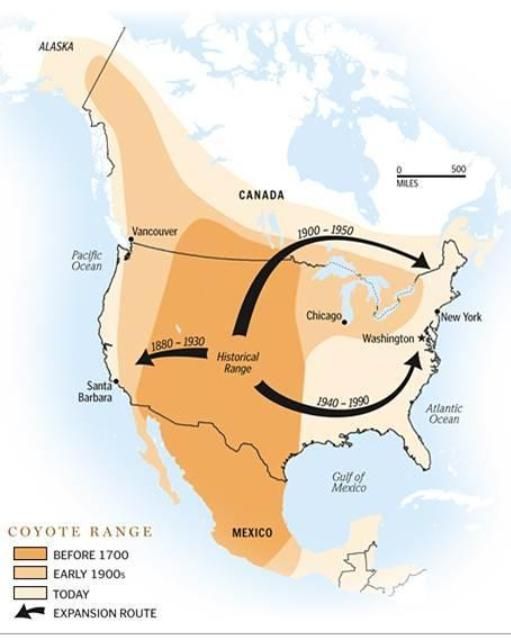
Credit: Urban Coyote Research Project
Biology and Behavior: Coyotes are members of the dog family (Canidae) and are habitat generalists, meaning they will use almost all habitats, including urban areas and beaches. Coyotes are opportunistic omnivores and consume a variety of animals (small reptiles, rabbits, insects, deer, feral cats), as well as carrion, eggs, and plants such as grasses, watermelon, and berries. Depending on habitat and food resources, coyotes may live alone, in breeding pairs, or in small groups. Coyotes are social, vocalizing with yips, barks, and howls. Coyotes are sexually mature within one year and breed during the winter. Both parents care for the young, and dens are typically in burrows, hollow logs, or dense vegetation. There is some evidence of density-dependent reproduction with smaller litter sizes as the coyote population in an area increases.
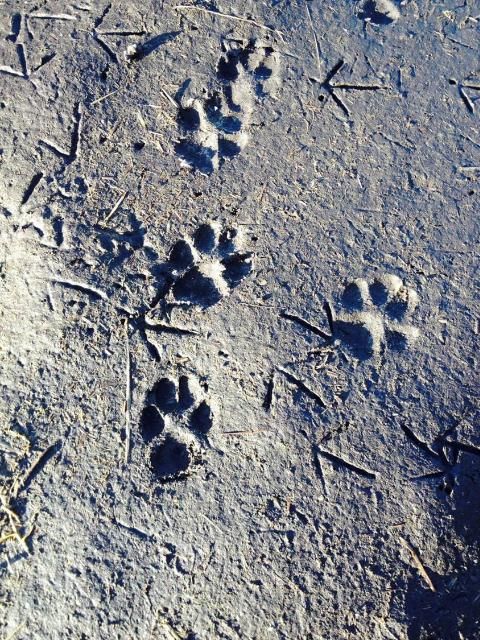
Credit: UF/IFAS
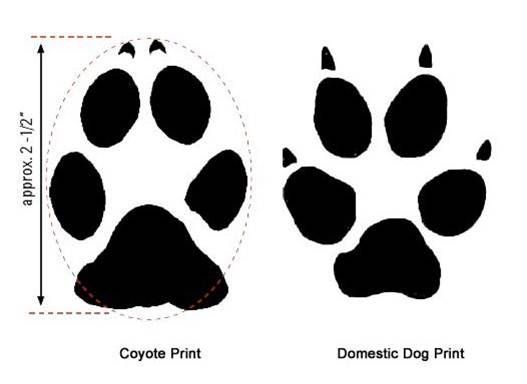
Credit: Urban Coyote Research Project
Impacts: There are varying perspectives on coyotes as their range continues to expand, often into urban areas. Some view coyotes as part of Florida's natural wildlife, while others view coyotes as invasive pests that are preying on livestock, pets, and wildlife. One of the greatest conflicts in Florida is coyote predation on livestock. Coyotes have been known to injure or kill sheep, goats, calves, poultry, and hogs, and they also eat agricultural crops. They typically attack the neck of an animal, and signs of coyote attack include bite marks, bruises, and bleeding around the head, neck, and ears, as well as wounds to the hind legs and tails of livestock. Coyote tracks and droppings may not indicate an attack. If coyote sign is present near a dead animal, it may be that coyotes are only scavenging after the death of the animal from other causes. How often coyotes are truly to blame for livestock loss is an important question that researchers are currently trying to answer. Coyotes can also attack small pets, especially in urban areas. They have been suggested to compete with similar-sized predator species, such as bobcats and foxes, but so far data implies co-existence is possible. Coyotes have also been known to depredate ground-nesting bird eggs and sea turtle eggs. Attacks on humans are extremely rare.

Credit: UF/IFAS
Did you know?
Coyotes were originally predators of the Great Plains and Mexico but have now expanded throughout North America.
Fast Facts
- Eastern coyotes are larger than other coyotes, possibly because they have hybridized with red wolves.
- Coyotes have a keen sense of hearing, excellent vision, and highly sensitive noses.
- Coyotes are crepuscular, which means they are most active at dawn and dusk, and nocturnal.
- They can be a threat to livestock and small pets.
How You Can Help
- Learn about your local coyote control laws. Visit http://myfwc.com.
- Protect your pets by keeping them indoors or in a fenced area.
- Reduce urban conflicts by securing garbage cans.
- Investigate methods to protect your livestock, such as guard donkeys and dogs and exclusion fencing.
More information and factsheets at edis.ifas.ufl.edu/topic_coyotes